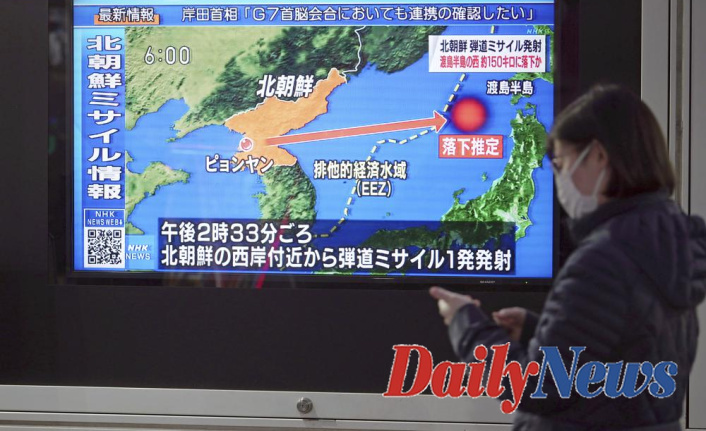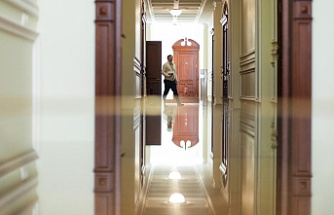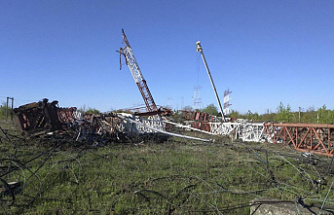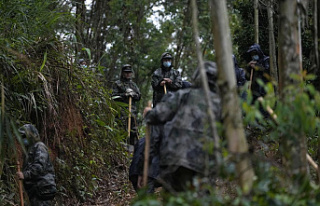This was part of a pressure campaign to force the United States and its rivals to recognize it as a nuclear power, and to remove crippling restrictions.
After the U.S. military and South Korean militaries claimed that North Korea was preparing to launch a large ICBM, the launch extended North Korea’s arsenal of weapon teststhis.
South Korea's military responded by launching live-fire missiles from its own missile launch points, including a fighter plane and a ship. This underscores the resurgence of tensions, even though nuclear negotiations are still frozen. It stated that it was ready to carry out precision strikes against North Korea's missile launch sites as well as its command and support facilities.
Linda Thomas-Greenfield was the U.S. ambassador at the United Nations. She told reporters that the United States requested a meeting of the Security Council on the launch and hopes to have it on Friday.
The Joint Chiefs of Staff of South Korea stated that the North's ICBM from Sunan, near Pyongyang, traveled 1,080 km (670 miles) and reached a maximum height of more than 6,200 kilometers (3.850 miles). To avoid hitting Japan's territorial waters, the missile was fired at a high angle.
Japan's Deputy Defense Ministry Makoto Oniki stated that flight details suggest a new type ICBM.
"It's an unforgivable act of recklessness. After arriving in Belgium to attend the Group of Seven meetings, Fumio Kishhida, the Japanese Prime Minister, said that the act was "resolutely condemned".
According to Tokyo's Chief Cabinet Secretary Hirokazu Mattsuno, the missile flew for 71 minutes before landing in territorial waters near Hokkaido. He said that Japan might search its exclusive economic zone for debris in order to examine the North's technology.
Japan's coast guard issued an advisory to vessels in the vicinity waters. However, there were no immediate reports that boats or aircraft had been damaged. Japanese fisheries organisations released a statement condemning the launch as "barbaric" and putting fishermen's livelihoods and lives at risk.
Moon Jae-in, the South Korean President, criticized Kim Jong Un's violation of a self-imposed moratorium regarding ICBM testing and posed a "serious danger" to the region as well as the wider international community.
According to Jen Psaki, White House Press Secretary, the United States strongly condemned the North's attack, calling it a "brazen violations" of U.N. Security Council resolutions and threatening the security of the region.
"The door hasn't closed on diplomacy but Pyongyang must stop its destabilizing activities immediately. She said that the United States would take all necessary steps to protect the American homeland, Republic of Korea, and Japanese allies.
The White House stated that President Joe Biden and Kishida discussed the North's launch in Brussels on the sidelines to the G-7 summit. They stressed the importance of diplomacy, and agreed to continue working together for Pyongyang to be held responsible.
Kim Dong-yub is a professor at Seoul’s University of North Korean Studies. He said that flight details indicate that the missile could reach targets up to 15,000 km (9,320 miles) when fired on a normal trajectory and with a warhead weighing under a tonne. This would put the entire U.S. continent within striking distance.
Kim Jong Un, who had been involved in provocative nuclear explosive and ICBM testing experiments in 2017, suspended such testing in 2018, ahead of his first meeting in America with Donald Trump.
Analysts believe that North Korea's return to nuclear brinkmanship is a sign of its determination to maintain its nuclear power status and gain economic concessions from Washington.
Kim might also feel the need to show off his military achievements to his domestic audience, as he struggles with an economy that is deteriorating due to border closures and pandemics.
Leif-Eric Easley is a professor at Seoul’s Ewha Womans University. She said that "despite economic challenges and technical setbacks the Kim regime is determined advancing its missile capabilities." International policymakers would make a mistake if they believed that the North Korean missile threat could be ignored while the world dealt with the pandemic in Japan and Russia's invasion Ukraine.
Experts say that the passive handling of North Korea by the Biden administration so far is encouraging North Korea to increase its testing activities, even though it is currently focusing on Russia's invasion in Ukraine and intensifying rivalry against China. The Obama administration has so far only imposed symbolic sanctions on North Korea in response to its recent tests, and offered open-ended negotiations that were rejected by Pyongyang.
This was North Korea's 12th round this year of weapon launches. It came after it had fired artillery pieces into waters on Sunday.
The North also tested a number of new missiles including a hypersonic weapon, and the first launch of an intermediate-range missile capable of reaching Guam (a crucial U.S. military base in the Pacific).
In recent weeks, it also carried out two medium-range test flights from Sunan, which is home to the country’s main airport. The U.S. military and South Korean militaries determined that these tests involved parts of the largest ICBM North. Allies said that the missile, known as Hwasong-17 by the North, could soon be tested at full range.
The tests were repeated by a second launch from Sunan last Wednesday. However, South Korea's military stated that the missile likely exploded within minutes of liftoff.
Official media from North Korea insist that the two successful tests were intended to develop cameras and other systems for a spy spacecraft. Analysts believe the North is trying to simultaneously improve its ICBMs while also acquiring some space-based reconnaissance capability. This could be done under the pretense that a space launch would reduce international opposition to such moves.
This launch could be scheduled around an important political anniversary in April: the birthday of Kim Il Sung, late grandfather of current leader Kim.
During three 2017 flight tests, the North's previous ICBMs showed potential range to reach America. It is possible that the North's larger Hwasong-17 was developed in order to arm it with multiple warheads in order to defeat missile defenses.
The Hwasong-15 flew approximately 1,000 km (600 miles) in 50 minutes at a maximum altitude 4,000 kilometers (2400 miles) during North Korea's November 2017 ICBM test. It was not immediately clear if the Hwasong-17 missile was involved in the latest test.
Since 2019, denuclearization talks between the U.S. and North Korea have been in limbo. The Americans refused to accept North Korea's request for significant sanctions relief in return for a partial surrender its nuclear capabilities.
Kim presided over a Workers' Party meeting that took place Jan. 19. Politburo members made a veiled threat of ending Kim's moratorium on ICBM testing and nuclear tests. They cited U.S. hostility.
South Korea's military also found signs that North Korea could be restoring tunnels at its nuclear test ground, which were detonated in May 2018. This was weeks before Kim's first meeting of Trump and Kim.












